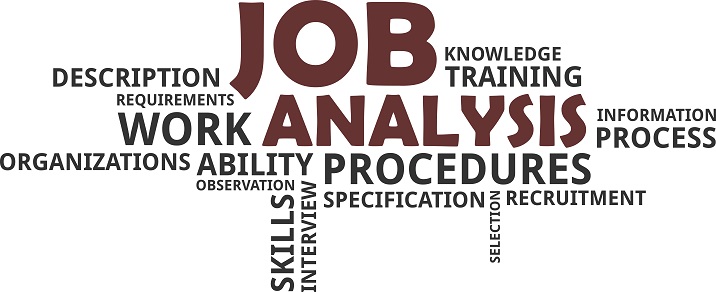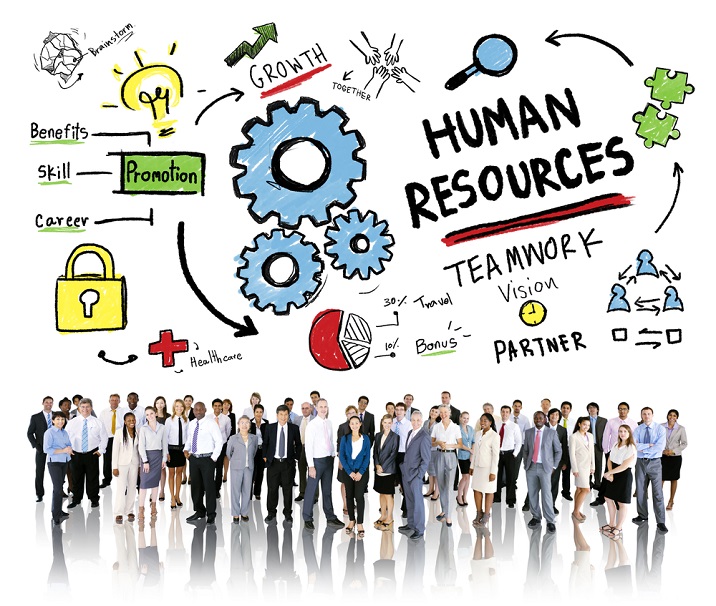Look My Show
Every step of the way
सोमवार, 26 जुलाई 2021
विश्व की 10 शक्तिशाली खुफिया एजेंसी
सोमवार, 19 जुलाई 2021
शनिवार, 14 नवंबर 2020
HRM – Planning
HRM – Planning
Human Resource Planning (HRP) is the process of foreseeing the requirement of human resources in an organization. The objective is also to determine how the existing human resources best fit in their jobs.
Thus, it focuses on the basic economics concept of demand and supply in the context of the human resource capacity of an organization.
Components of HRP
The following are the components of human resource planning −
Current HR Supply
It involves a comprehensive study of human resource strength in the organization with respect to the numbers, skills, talents, competencies, qualifications, experiences, age, tenures, performance ratings, designations, grades, compensations, benefits, etc.
At this stage, the consultants may organize extensive interviews with the managers to understand the critical HR issues they face and basic workforce abilities as crucial for various business processes.
Future HR Demand
All the known HR variables like attrition, lay-offs, foreseeable vacancies, retirements, promotions, pre-set transfers, etc. are considered while selecting future HR demand. Further, specific unknown workforce temporaries like competitive factors, resignations, abrupt transfers or dismissals are also involved in the scope of analysis.
Demand Forecast
It is important to understand the business strategy and the objectives of the organization in the long run so that the workforce demand forecast is aligned to the organizational goals.
HR Sourcing Strategy and Implementation
Sourcing strategy and implementation may involve conducting interaction programs with employees, relocation, talent acquisition, recruitment and outsourcing, talent management, training and coaching, and revision of policies. The plans are then executed taking into confidence the mangers so as to make the process of execution smooth and efficient.
Even though HR Planning sounds quite simple as a process of managing the numbers in terms of human resource needs of the company, the actual exercise may include the HR manager to face many roadblocks owing to the effect of the current workforce in the company, pressure to meet the business objectives and prevailing workforce market condition.
Thus, a properly conducted process of HR Planning by an HR Consulting company helps the company in meeting its aims and objectives in a timely manner with the right HR strength in action.
Job Analysis
It is the process of identifying and choosing elaborated contents of a particular job, thus clearly defining duties, rules, responsibilities, accountabilities, and skills related to the job.

Job analysis is the process of analyzing the job — what is the demand and requirement for the job, and not of the individual.
The process of job analysis gives two sets of data −
- Job description − Job description is a written statement including complete information about what all a job holds, like job title, duties, tasks and responsibilities related to job, working conditions and hazards, reporting relationships, tools, machines and equipment to be used, and relationships with other designations.
- Job specification − Job specification includes particulars regarding the capabilities that an individual should possess to perform the assigned tasks efficiently. This includes educational qualification, experience, training, appropriate skills, knowledge, and abilities required to perform the job.
Job Design
Job design is a continuous and ever-evolving process that is targeted at helping employees in making adjustments with the changes at the workplace. The end goal is minimizing dissatisfaction and enhancing motivation and employee engagement at the workplace.
There are various steps involved in job designing, but all these steps follow a logical sequence. Every step has its own importance and no step can be neglected during the designing process. The sequence is given below −
- What jobs are to be done or what jobs are a part of the job?
- How are the jobs performed?
- What amount of jobs is required to be done?
- What is the procedure of performing these tasks?
All these questions are considered while arriving upon a clear definition of a specific job, thereby making it less risky for the one performing the same. A well-defined job creates a feeling of achievement and a sense of high self-esteem among the employees.
Job Evaluation
In contrast to job specification, job evaluation specifies the relative value or worth of each job in a company by examining the task and ranking the jobs accordingly.
Job evaluation cab be done by any of the following methods −
- Points rating − Different levels are allotted to the various elements of jobs and then the points allocated to different levels are summarized to get the point score of the jobs. It forms the basis of pay structure.
- Factor comparison − A comparison of different independent factors of jobs is done and points are given to each factor scale of individual job. These points are then aggregated to rank the jobs.
- Job ranking − A job is not broken into factors or elements; instead, it is evaluated as a complete process and is compared with other jobs. After proper evaluation, jobs are scaled accordingly.
- Paired comparison − Jobs are compared with each other and points are allocated depending on being ‘higher, lesser or equal’. These points are added to prioritize the order of jobs. The jobs with higher priorities are given more attention as compared to others.
HRM – HR and Business Strategy
Integrating HR Strategy with Business Strategy
Today, human resource departments have a more precise, strategic role in companies, and an HR strategy affects the bottom line. Let us look into HR as part of a complete business strategy.
HR Strategy as Business Strategy
In real world, no margin in the sand is drawn between human resources strategy and business strategy. A successful business owner understands the strong connection between the two. Progressing human capital is essential to the longevity and success of a business.
Human resources strategy today includes executive leadership teams conferring with human resources experts to improvise complementary goals for human resources and the complete business.
HR Strategy and Business Productivity
The recruitment and selection process in human resources department is paramount to creating a productive workforce. Maintaining a workforce where employees enjoy high levels of job satisfaction and job security converts into a workforce that assists in achieving business goals.
Trends Affecting HR and Business Strategy
Presently, we can say that HR technologies have become an integrated engine in advancing the broader needs of businesses, supporting far more than the basic transactions, and advancing HR and business agenda for future.
Human resources information system (HRIS) is integral to the progress of performance management, recruitment, selection. It also plays a vital role in the rejection of candidates, their promotions and postings, etc.

Interaction among Executive Leadership
The best way to cultivate a relationship between HR and C-level executives is by demonstrating the return on investment (ROI) in human resources activities and practices. This may include explaining the link between reduction in employee turnover and improvement in job satisfaction that improves the bottom line.
Example
Till now, we are very clear about integration of HR strategy with business strategy, business productivity, their interdependencies and the way their relationship influences the organization as a whole.
Let us now take an example to understand the concepts better.
Company X functions from the northeast corner of India. Its functions are limited to the local area only and they have projected their income and gains on that basis.
Due to the prevailing restrictions in the area, the Company has to hire its staff from the local population, who are not professionally qualified. However, the Company ropes in the services of a professionally qualified experienced CEO, who is a techno-commercial man and has the duty to manage the organization centrally.
The CEO interacts with almost all the staff and arranges for on the job training for them. As the employees are not professionally qualified, there is little fear that they will change the job after getting trained.
In this case, lack of local competition goes in the Company’s favor. The Company however ensures that it recruits hard working, focused and committed personnel. The salary policy of the Company is such that each candidate is able to earn enough to meet the basic needs.
Features of HRM
Features of HRM
Human Resource Management as a discipline includes the following features −
- It is pervasive in nature, as it is present in all industries.
- It focuses on outcomes and not on rules.
- It helps employees develop and groom their potential completely.
- It motivates employees to give their best to the company.
- It is all about people at work, as individuals as well as in groups.
- It tries to put people on assigned tasks in order to have good production or results.
- It helps a company achieve its goals in the future by facilitating work for competent and well-motivated employees.
- It approaches to build and maintain cordial relationship among people working at various levels in the company.
Basically, we can say that HRM is a multi-disciplinary activity, utilizing knowledge and inputs drawn from psychology, economics, etc.
The Scope of HRM
The scope of HRM is very wide. It consists of all the functions that come under the banner of human resource management. The different functions are as follows −
Human Resources Planning
It is the process by which a company identifies how many positions are vacant and whether the company has excess staff or shortage of staff and subsequently deals with this need of excess or shortage.
Job Analysis Design
Job analysis can be defined as the process of noticing and regulating in detail the particular job duties and requirements and the relative importance of these duties for a given job.
Job analysis design is a process of designing jobs where evaluations are made regarding the data collected on a job. It gives an elaborate description about each and every job in the company.
Recruitment and Selection
With respect to the information collected from job analysis, the company prepares advertisements and publishes them on various social media platforms. This is known as recruitment.
A number of applications are received after the advertisement is presented, interviews are conducted and the deserving employees are selected. Thus, recruitment and selection is yet another essential area of HRM.
Orientation and Induction
After the employees are selected, an induction or orientation program is organized. The employees are updated about the background of the company as well as culture, values, and work ethics of the company and they are also introduced to the other employees.
Training and Development
Employees have to undergo a training program, which assists them to put up a better performance on the job. Sometimes, training is also conducted for currently working experienced staff so as to help them improve their skills further. This is known as refresher training.
Performance Appraisal
After the employees have put in around 1 year of service, performance appraisal is organized in order to check their performance. On the basis of these appraisals, future promotions, incentives, and increments in salary are decided.
Compensation Planning and Remuneration
Under compensation planning and remuneration, various rules and regulations regarding compensation and related aspects are taken care of. It is the duty of the HR department to look into remuneration and compensation planning.
Human Resource Management
Human Resource Management (HRM) is an operation in companies designed to maximize employee performance in order to meet the employer’s strategic goals and objectives. More precisely, HRM focuses on management of people within companies, emphasizing on policies and systems.
In short, HRM is the process of recruiting, selecting employees, providing proper orientation and induction, imparting proper training and developing skills.

HRM also includes employee assessment like performance appraisal, facilitating proper compensation and benefits, encouragement, maintaining proper relations with labor and with trade unions, and taking care of employee safety, welfare and health by complying with labor laws of the state or country concerned.